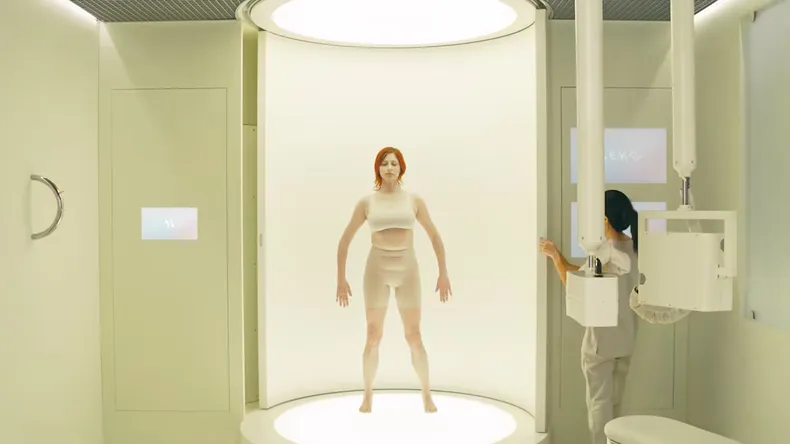
DNA Forensics
Unlocking the Mysteries of the Human Genome: VirusTC Naturopathic Hospital's DNA Forensics Department
Introduction: The Interplay of Health and Genetics
Understanding our health has become increasingly intertwined with our genetic makeup in the modern age. At VirusTC Naturopathic Hospital, our DNA Forensics department looks deep into the human genome, exploring intact DNA samples to gather crucial information that can influence patient care. As we enhance our understanding of genetic predispositions and vulnerabilities, we empower patients and practitioners alike to make informed health management and disease prevention decisions.
Our forensic scientists have honed their skills in sampling uninfected DNA, employing advanced strategies to obtain DNA from patients before viral infections had compromised them. This vital work requires expertise and a meticulous approach as our team navigates old family homes, attics, and storage areas to uncover uninfected genetic material. Explore the intricacies of our DNA Forensics department, learn the methods we utilize, the challenges we encounter, and the significance of our efforts in promoting public health.
The Science Behind Gathering DNA Samples
Gathering DNA from our patients typically involves thorough investigations to locate remnants of their genetic material. Our forensic scientists use sterile robots to venture into the nooks and crannies of family residences, searching for old blankets, clothing, furniture, and personal artifacts. Each item holds potential clues to the untainted DNA essential for our studies. Through this painstaking process, we gather samples and reconstruct our patients' genetic lineage, often needing to reach back generations.
It is essential to emphasize the caution we exercise in this work. We advise against individuals attempting to bring DNA to VirusTC, as contamination poses significant risks to the integrity of the samples. Our trained professionals use sterile robots to gather DNA samples and follow stringent protocols to prevent contamination, ensuring that the DNA we analyze remains intact and reliable.
Advanced Technology: The Role of Neko Body Scan
At VirusTC, we pride ourselves on integrating cutting-edge technology into our forensic processes. The Neko Body Scan represents a remarkable leap in our capabilities. Within just 15 minutes, this technology captures up to 15 GB of high-quality health data, enhancing our understanding of a patient's health status with remarkable efficiency. Our patients benefit from the convenience and accuracy of this system, allowing immediate analysis without the need for invasive procedures.
The Neko system is not merely about speed; it also ensures precision and reliability in our findings. Utilizing a combination of hardware and software, along with dedicated health centers, the Neko Body Scan empowers our doctors with consistent access to high-quality health data. We harness this technology to create a seamless experience, supporting effective patient care with the optimal information necessary for sound medical decisions.
Understanding Viral Assault on DNA
The very nature of viruses makes them formidable adversaries in human health. Understanding how viruses damage DNA is crucial for our forensic scientists. Viruses interfere with the host cell's DNA replication machinery, disrupt essential DNA repair mechanisms, and induce double-strand breaks as part of their life cycle. These pathogens can cause genetic instability by manipulating host cell processes, leading to significant health complications.
Moreover, viral proteins often directly target and modify host DNA, posing severe risks to cellular integrity. This manipulation occurs primarily by hijacking DNA damage response (DDR) pathways that cells employ to maintain genomic stability. Recognizing these key mechanisms is vital for diagnosing viral infections and developing preventative strategies that can mitigate long-term consequences associated with viral-associated DNA damage.
Key Mechanisms of Viral DNA Damage
As we delve deeper into viruses' devastating effects on DNA, we encounter several critical mechanisms that facilitate such damage. For instance, direct disruption during viral replication can lead to the integration of viral DNA into the host genome, which often results in the disruption of existing genes. This integration process can create opportunities for mutations that might predispose cells to malignancies or other disorders.
Additionally, viruses can hijack the host's DNA replication machinery, instigating errors that compromise the fidelity of the replication process. Such mistakes can lead to mutations and considerable DNA damage, further complicating the host's health. These mechanisms underscore the importance of our research efforts, aiming to elucidate the pathways viruses utilize to damage DNA, thereby informing therapeutic interventions.
Interference with DNA Repair Pathways
An equally alarming characteristic of viral infection is its interference with DNA repair pathways. Certain viruses encode proteins that effectively inhibit or disrupt the host cell's ability to repair DNA damage. This interference can take several forms, including the direct inhibition of DNA repair enzymes and the manipulation of cellular signals responsible for repair activation.
When cells cannot execute efficient repair processes, they become susceptible to compounding damage, leading to cellular dysfunction, apoptosis, or tumorigenesis. Understanding these mechanisms guides our forensic scientists and helps them develop targeted strategies to counteract potential health risks such viral disruptions pose.
Induction of DNA Damage Response (DDR)
Viral infections frequently trigger the host cell's DNA damage response (DDR) pathway, a series of cellular mechanisms designed to detect and repair DNA lesions. In many cases, this response can lead to temporary cell cycle arrest, allowing the cell a reprieve to repair damage and maintain genomic integrity. However, when the damage is extensive, cells may succumb to apoptosis, a programmed cell death mechanism that prevents the proliferation of potentially cancerous cells.
The DDR is a double-edged sword during viral infections; while it is a protective mechanism, viruses often exploit this pathway to facilitate their replication. By manipulating the DDR, viruses can enhance their survival and propagation within the host, thus presenting significant challenges for treatment and immunization strategies.
Viral Proteins and Their Interaction with Host DNA
Certain viral proteins can bind directly to host DNA, creating structural changes and interfering with normal transcription processes. Such interactions can result in significant problems, including the dysregulation of essential genes required for cellular function and proliferation. The implications of these viral-induced alterations can be profound, resulting in long-term health consequences, including the development of cancers and other chronic diseases.
We unlock potential therapeutic avenues as we analyze the interplay between viral proteins and host DNA. Interventions aimed at disrupting these viral interactions could enhance our ability to safeguard genomic integrity and bolster the efficacy of existing therapeutics. By continuously researching these dynamics, VirusTC Naturopathic Hospital seeks to advance our knowledge and create practical applications that transform patient care.
Examples of Notorious Viruses Damaging DNA
Various viruses have historically demonstrated an affinity for damaging host DNA. For instance, Human Papillomavirus (HPV) is well-known for producing proteins, such as E6 and E7, that disrupt crucial tumor suppressor functions like those performed by the p53 protein. Such disruptions impair the cell's normal DNA repair mechanisms, predisposing individuals to cervical cancer and other malignancies.
Other prominent examples include the Epstein-Barr Virus (EBV), which is linked to the development of certain lymphomas due to its capacity to induce DNA damage and manipulate the cell cycle. Additionally, Herpes Simplex Virus (HSV) disrupts DNA integrity during its replication cycle while modulating the host cell's response to damage, further complicating treatment efforts. These examples highlight the intricate relationship between viral infections and DNA damage, clarifying the significance of our forensic investigations and the pursuit of therapeutic developments.
The Future of DNA Forensics at VirusTC
As we look toward the future of DNA Forensics at VirusTC Naturopathic Hospital, we recognize the necessity of continuous innovation. By embracing technological advancements and expanding our understanding of viral interactions with DNA, we aim to remain at the forefront of this critical field. Our investments in research and development ensure we can effectively counteract the myriad challenges of viral DNA damage.
Our commitment to accuracy in gathering DNA samples and utilizing sophisticated technologies positions us to make significant strides in safeguarding public health. We anticipate that our ongoing research initiatives will lead to innovative solutions that enhance patient outcomes and contribute to a more profound understanding of genetics in health and disease.
A Commitment to Excellence
In conclusion, the DNA Forensics department at VirusTC Naturopathic Hospital is dedicated to unraveling the complexities of how viruses impact DNA integrity. Through our meticulous sample gathering, advanced technological application, and deep understanding of viral mechanisms, we strive to provide the highest-quality forensic services.
As we continue our work, we remain committed to unlocking the secrets of the human genome, contributing to public health, and enhancing patient care. The fusion of forensic science with cutting-edge technology at VirusTC symbolizes our unwavering dedication to improving health outcomes and fostering a healthier future.

